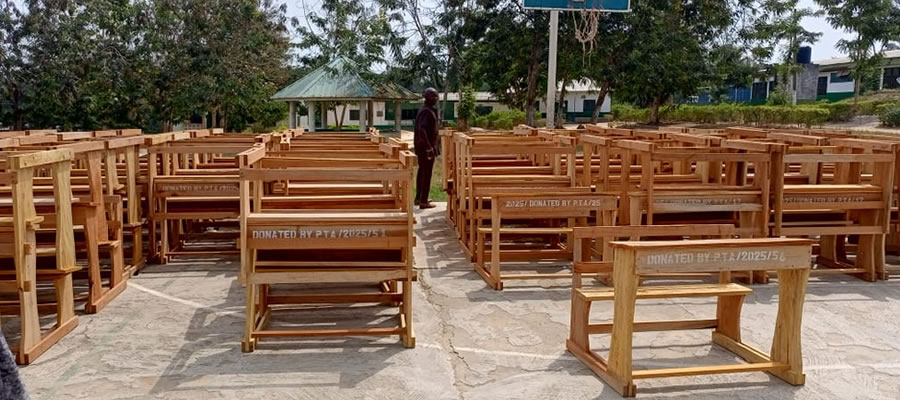

VULNERABILITY ASSESSMENT AND ANALYSIS
This section takes a look at the relationship people have with their environment to social forces and institutions and the cultural values that sustain or contest them.
The concept takes a look at the expressions of multi-dimensionality of disasters by focusing attention on the totality of relationships in a given social situation which constitute a condition that, in combination with environmental forces, are capable of producing disasters.
An assessment of the various socio-economic and environmental factors that pre-dispose people to various risks, were assessed. From the in depth analysis that was conducted, the following issues were identified, both major and minor sources of concern are:
1. Road accidents due largely to poor nature of most of the roads in the District.
2. Rainstorm destruction to building including but not limited to schools and health facilities.
3. Occasional flooding of roads due to poor drainage that prevent traders from transporting goods around.
STRATEGIES TO ADDRESS ISSUES IDENTIFIES
As part of the District’s mandate, a number of strategies were proposed for adoption to address the issues that make the District vulnerable to natural disasters. These include:
4. Regular maintenance of all feeder roads
5. Ensuring that proper and appropriate building standards are adhered to before permits are issued to individuals who wish to build or put-up structures.
6. Expansion of drains and construction of culverts to allow free flow of water even in cases of extreme down pours
VULNERABILITY IN TERMS OF SOCIAL POLICY AND SOCIAL PROTECTION
An analysis of the social and economic structure of the District also revealed that people living with disability are the hardest hit in terms of survival.
In this regard, major social protection initiatives to address poverty and vulnerability have been identified and earmarked for implementation within the medium term.
This includes:
1. Expansion of coverage of the National Health Insurance Scheme (NHIS) to poor and deprived communities
2. Ensuring proper delivering of the Ghana School Feeding Programme
3. Expansion of the coverage of the Livelihood Employment Against Poverty Pregnancies
4. Training of People Living With Disabilities in various economic skills such as soap making and wood carving
5. Provision of credit facilities to PLWD to start business
SCIENCE, TECHNOLOGY AND INNOVATION (STI)
The section examines the extent to which this phenomenon affects the development of the District.
STI education is low in the District, with inadequate science resource centres in the District and inadequate science laboratories in the SHS in the District, the advancement of this field is on low and as such the impact to any meaningful development is also on the low.
SUMMARY OF KEY DEVELOPMENT ISSUES
SUMMARY OF KEY DEVELOPMENT ISSUES EMANATING FROM SITUATIONAL ANALYSIS
The profile of the District as presented reveals the seriousness of poverty in Assin South District.
This calls for the introduction of pragmatic programmes that will help improve the living conditions of the people. The focus of this therefore is to identify the priority areas of the District in reducing poverty in the District. This area contains a summary of the key development issues, the needs and aspirations of the District.
Table 24: Key Development Issues
DEVELOPMENT ISSUES AND ASPIRATIONS
SUMMARY OF KEY DEVELOPMENT ASPIRATIONS EMANATING FROM COMMUNITY ACTION PLANNING
The District Assembly Assisted and facilitated the communities under the six (6) Area Councils to prepare Local Development Plans or Community Action Plans (CAPs).
The Community Action Plans (CAPs) using the appropriate Guidelines especially the National Community Development Plan Guidelines, the DPCU took time to gather all the Community Action Plans of all the various Area Councils in the District.
These CAPs have been a source of valuable data for planning and projections. Data was gathered from all six (6) Area Councils and their communities.
A summary of the community perspective on current needs and aspirations has been compiled through consultation with the people in the Sub-District levels. Community needs and aspirations have been captured in the form of issues which can then be harmonised with the issues identified in the performance review and district profile.
These findings are summarily listed below:
COMMUNITY NEEDS ASPIRATIONS
ANALYSIS OF COMMUNITY NEEDS
Fig 10: Community Needs
SUMMARY OF KEY DEVELOPMENT ISSUES EMANATING FROM COMMUNITY INTERFACING
These findings are summarily listed below:
AREA COUNCIL KEY ISSUES
1. ONGWA
· Difficulty in accessing quality educational facilities
· Difficulty in accessing quality water facilities
· Difficulty in accessing quality health care facilities
· Poor sanitation
· Difficulty in marketing farm produce
· Inadequate toilet facilities
· Transportation difficulties
· Weak sub District structures
· Excessive flooding
· High maternal deaths
· High teenage pregnancy
· Destruction of crops by elephants and other animals
· Early marriages
· poor health care deliver
2. ANYINABRIM
· Difficulty in accessing quality education facilities
· Difficulty in accessing quality water facilities
· Inaccessible roads
· Difficulty in accessing quality health care
· Farming and marketing problems· Problem facing small and medium scale enterprises
· High rate of pedestrian accidents
· High rate of social vices (smoking and gambling)
· High rate of teenage pregnancy
· Child labour
· Weak sub District structure
PRIORITISATION OF DEVELOPMENT ISSUES
The District prioritised the development issues and aspirations emanating from both the situational analysis and the community interface and data gathering.
Various tools were used such as the pairwise ranking of issues, problem tree analysis and the POCC analysis.
The District Development Priorities have also being linked with the goals of the MTDPF 2018 - 2021 and covers other inputs from other Sectoral Department and Agencies. The linkage of these priorities to the goals areas are listed below:
PRIORITISATION OF NEEDS AND ASPIRATIONS A. GOAL ONE:
ECONOMIC DEVELOPMENT
Industrial Transformation
• High cost of electricity
• Inadequate and unreliable electricity supply
• Limited skilled numbers personnel of industrial
• Limited supply of raw materials for local industries from local sources
• Lack of contiguous land for large-scale industrial development
• Distressed but viable industries
• Severe poverty and underdevelopment among peri-urban and rural communities
• Limited local participation in economic development
Private Sector Development
• Inadequate access to affordable credit
• Low domestic saving rate
• Limited access to credit for SMEs
Date Created : 10/14/2024 12:00:00 AM











 facebook
facebook
 twitter
twitter
 Youtube
Youtube
 +233 593 831 280
+233 593 831 280 0800 430 430
0800 430 430 GPS: GE-231-4383
GPS: GE-231-4383 info@ghanadistricts.com
info@ghanadistricts.com Box GP1044, Accra, Ghana
Box GP1044, Accra, Ghana